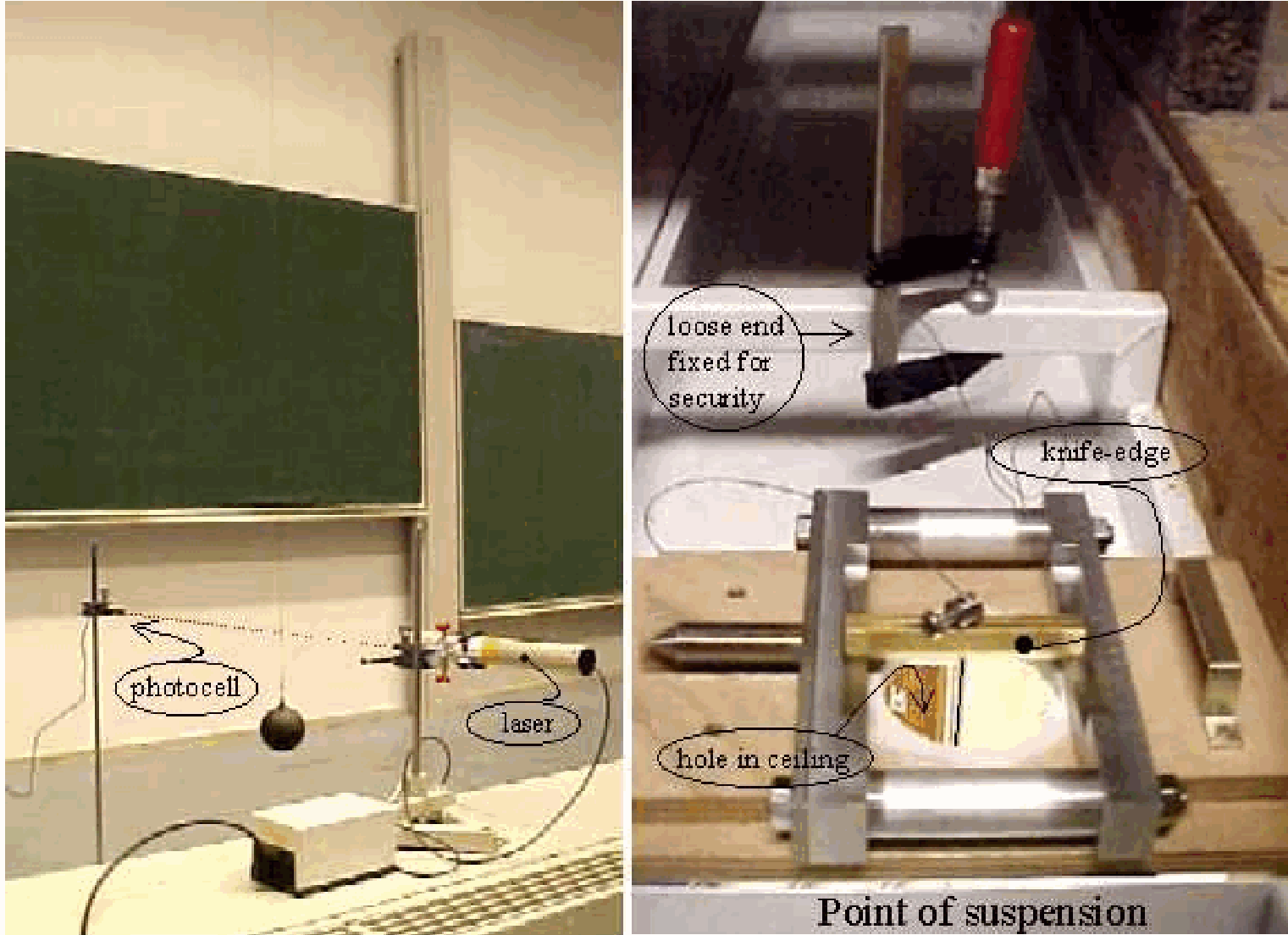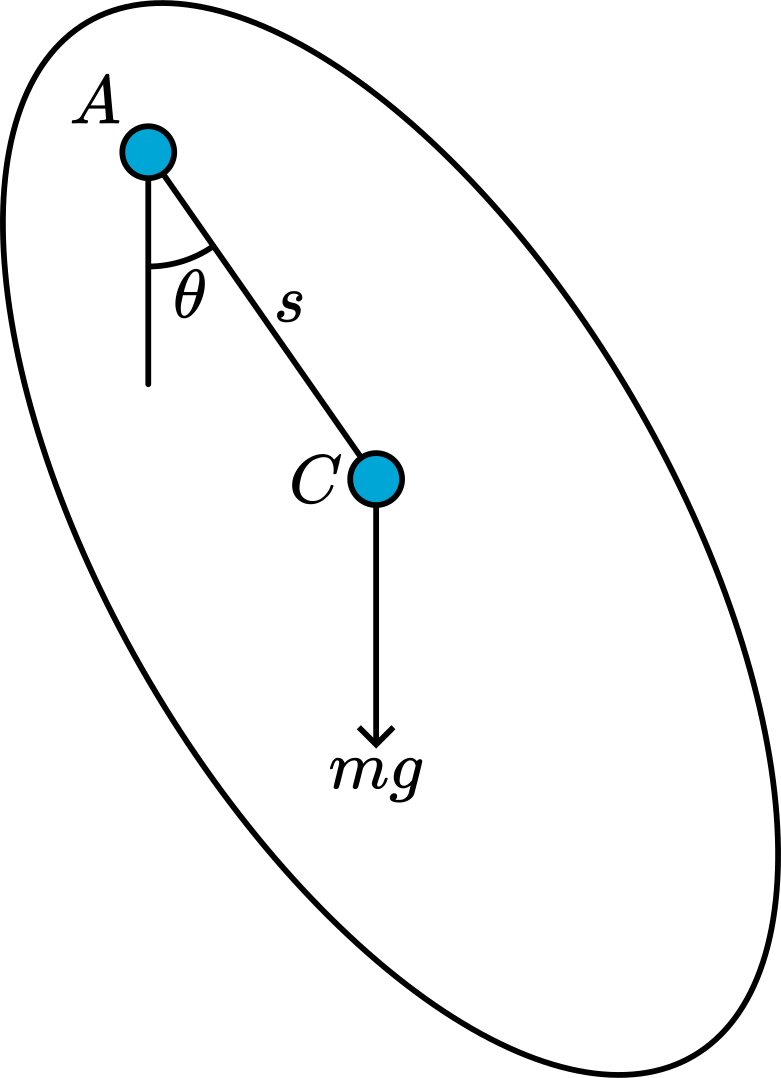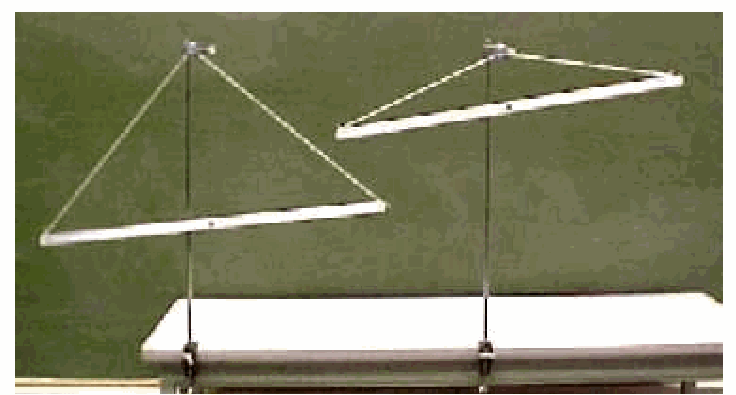02 Physical Pendulum (2)#
Aim#
To show the validity of the parallel axis theorem (Steiner’s law).
Subjects#
1Q10 (Momentum of Inertia)
3A15 (Physical Pendula)
Diagram#

Fig. 305 .#
Equipment#
4 sticks, one meter each, with holes at the ends.
1 meter stick for measurements.
suspension wires for sticks (see Diagram).
Presentation#
Pendulum 1 and 2 are swinging. It can be observed that they have the same period. Pendulum 1 and 3 are swinging. Again the same period is observed.
All three pendulums have the same period. Once started, they keep swinging in the same way together (observe the three centres of mass, C).
Explanation#
For a physical pendulum the period \(T\) is given by: \(T=\frac{2 \pi}{\sqrt{g}} \sqrt{\frac{I_{A}}{m s}}\) (see “Physical pendulum (1)”
Also, \(I_{A}=I_{C}+m s^{2}\) (Steiner), so \(T\) is constant as long as \(s\) is constant.
The suspension of the three pendulums is chosen such that the distance \(s\) is always the same because they are situated on a circle through \(\mathrm{C}\) (see Figure 306). \(s=50 \mathrm{~cm}\).

Fig. 306 .#
Remarks#
We also have a suspension as shown in Figure 307. Now the suspension point is \(0.167 \mathrm{~m}\) away from \(\mathrm{C}\) and again \(\mathrm{T}\) is the same because now the pendulum swings through the point of its reduced length (see demonstration “Physical pendulum (1)”).

Fig. 307 .#
Sources#
Mansfield, M and O’Sullivan, C., Understanding physics, pag. 154-156
Meiners, Harry F., Physics demonstration experiments, part I, pag. 277-278
